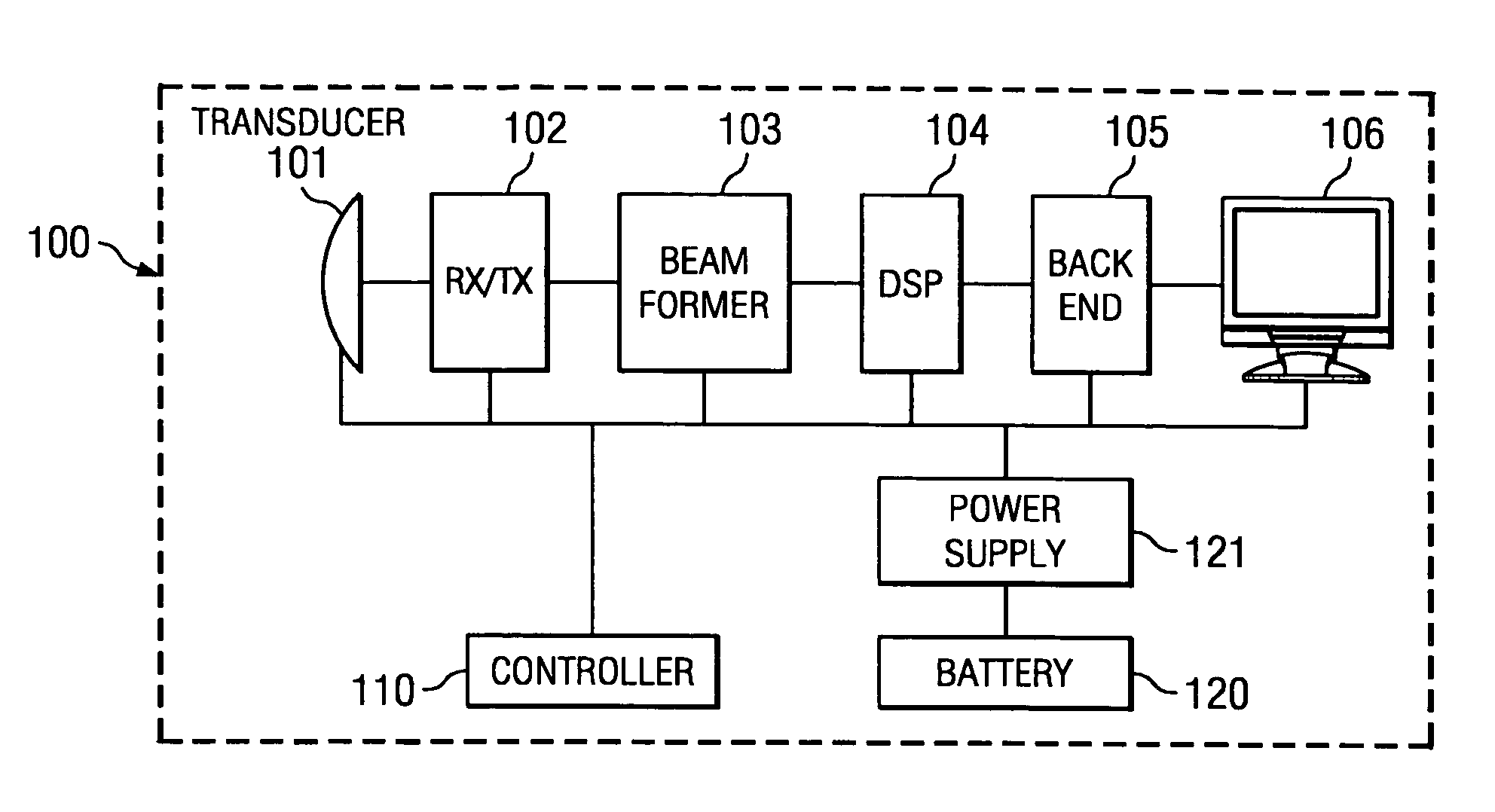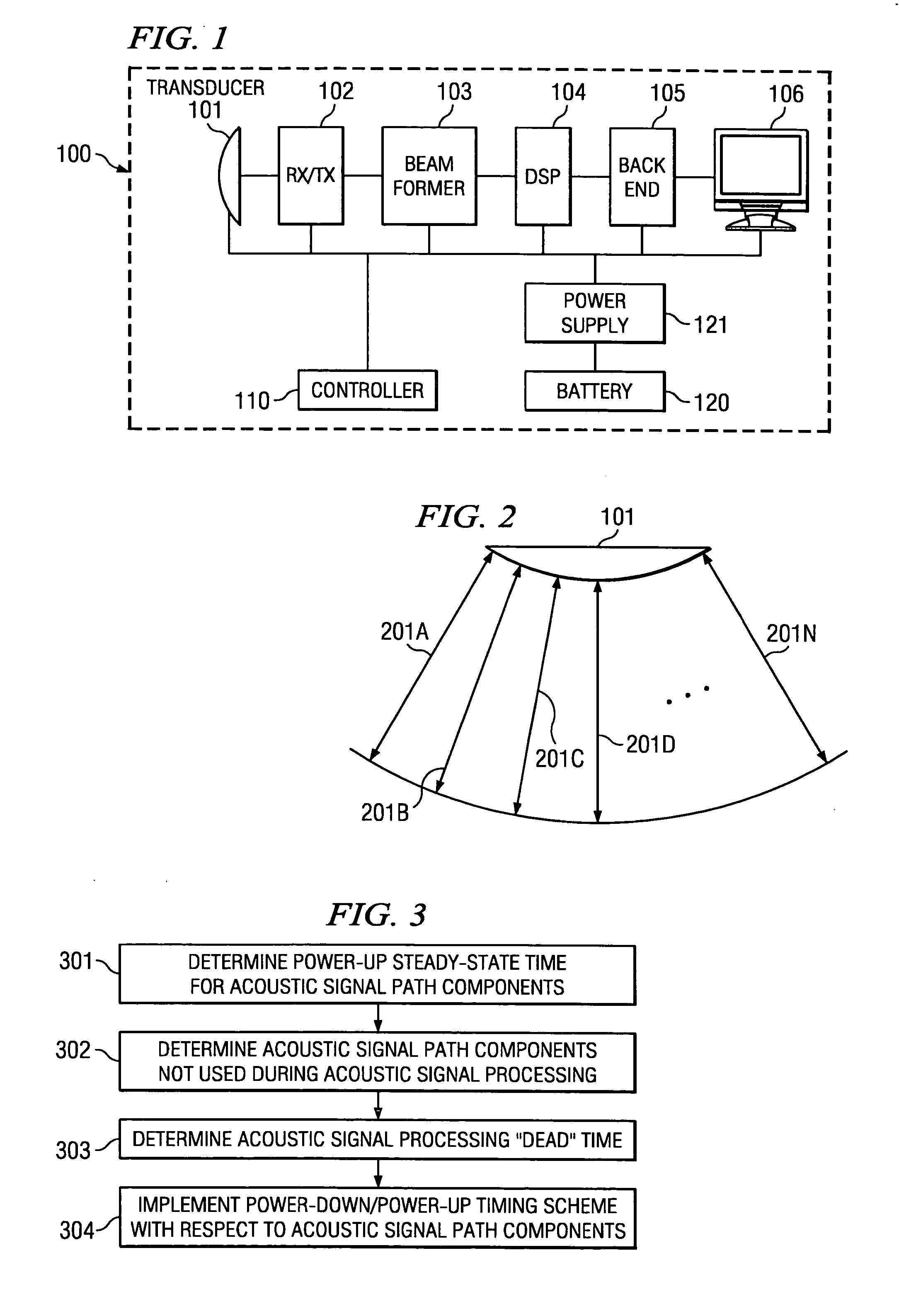Ultrasound system power management
a technology of ultrasonic systems and power management, applied in the field of ultrasonic system power conservation, can solve the problems of acoustic signal dead time between acoustic signal frames being often greater than acoustic signal dead time, and achieve the effect of minimizing the tim
- Summary
- Abstract
- Description
- Claims
- Application Information
AI Technical Summary
Benefits of technology
Problems solved by technology
Method used
Image
Examples
Embodiment Construction
[0017] Directing attention to FIG. 1, a high level block diagram of an ultrasonic diagnostic system adapted according to an embodiment of the present invention is shown as system 100. System 100 displays signals captured by transducer 101 (e.g., an array transducer) as images on monitor 106 (e.g., a cathode ray tube (CRT), liquid crystal display (LCD), gas plasma display, etcetera). The illustrated embodiment of system 100 includes 4 functional blocks, such as may comprise application specific integrated circuits (ASICs) between transducer 101 and monitor 106. Specifically, the embodiment of FIG. 1 includes transmit / receive module 102 which is connected to the elements of transducer 101, beamformer module 103 which may perform and control transmit and receive beamforming, digital signal processing (DSP) module 104 which may provide processing of the ultrasound signals such as filtering, and back end module 105 which may receive processed ultrasound signals and produce ultrasound ima...
PUM
 Login to View More
Login to View More Abstract
Description
Claims
Application Information
 Login to View More
Login to View More - R&D
- Intellectual Property
- Life Sciences
- Materials
- Tech Scout
- Unparalleled Data Quality
- Higher Quality Content
- 60% Fewer Hallucinations
Browse by: Latest US Patents, China's latest patents, Technical Efficacy Thesaurus, Application Domain, Technology Topic, Popular Technical Reports.
© 2025 PatSnap. All rights reserved.Legal|Privacy policy|Modern Slavery Act Transparency Statement|Sitemap|About US| Contact US: help@patsnap.com


